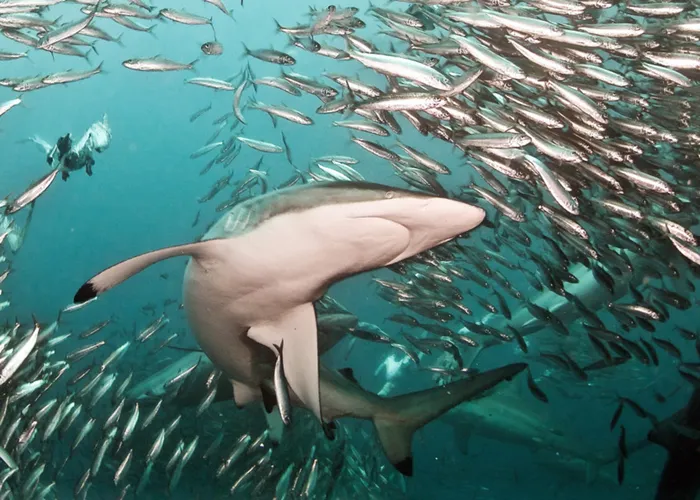Something fishy about #sardinerun tourism

Tourists and film crews have been attracted to South Africa and the KwaZulu-Natal coastline by the dramatic, award-winning images that have gone global. Tourists and film crews have been attracted to South Africa and the KwaZulu-Natal coastline by the dramatic, award-winning images that have gone global.
Durban - Tour and hospitality operators who promise sightings of the famous sardine run could be spinning fishy tales, marine life expert Mark Addison believes.
This is because the annual sardine run - with predators in pursuit and feasting on the migratory sardines along the coastline - is on the decline.
Now Addison, who made the sardine run internationally famous, is worried the tourism tide could turn against South Africa “it is based on the lack of honesty”.
If fishermen, divers and international film crews hoping to get action shots fail to witness the sardine run as depicted in dramatic documentaries and promised by tourism operators, they will end up disgruntled and not return.
“Some operators are too scared to say the sardine run is on the decline as it will affect their livelihoods,” said Addison in an interview after giving a presentation about the little silver fish at a monthly environmental talk at Crocworld Conservation Centre, Scottburgh.
undefined“Taking a boat out and seeing whales and dolphins is not the sardine run,” Addison said.
“The problem is that some years the sardines don’t come at all. They are not even making it up to Port St Johns. Sometimes, the predators don’t come either.”
Tourists and film crews have been attracted to South Africa and the KwaZulu-Natal coastline by the dramatic, award-winning images that have gone global on natural history documentaries such as National Geographic series and BBC productions, including the renowned Blue Planet Series: Nature’s Great Events, as well as a French production Oceans shot for Disney Nature. Many have gone on to win awards.
Addison, an acclaimed “free” diver (he does not use a cage), who pioneered tiger shark diving at the Aliwal Shoal on the KZN South Coast, was instrumental in attracting documentary-makers to South Africa and putting the sardine run-dubbed the “greatest shoal on Earth” - on the world map.
Addison and his movie-making friends showed global audiences what was happening out at sea during the sardine run. Their underwater documentaries captured the massive sardine “bait balls” that attracted dolphins, sharks, whales and swooping gannets.
Movie companies sent out dozens of crew, hired helicopters and spent millions to film the sardine run phenomenon, and National Geographic once carried 15 pages on the sardine run, which South African Tourism valued at $60-million (R896m).
Tour operators turned the sardine run into diving holidays, and bed and breakfast businesses also benefited. June - when the sardines are due in KZN - became the number one destination period for divers and adventure divers.
But while the sardine shoals were often 20km long and 60m deep from 1997-2009 (with the exception of 2003 when the sardines failed to arrive), stocks have been on the decline.
“We took some amazing images in Port St Johns in 2009, but that was the beginning of the end. There were so many predators too; it was like the animals knew it was the last supper,” Addison recalled.
He says the main reason for the decline is overfishing on the West Coast and the southern Cape Coast, followed by natural decline as well as climate change.
Addison told his audience that fishing crews dumped their catches of small and medium-sized sardines when they came across bigger fish.
“This over-fishing is a great tragedy and needs to be taken up at government level. We need to cut down on the fishing quotas and there is a need for observers on boats,” he felt.
Sardines, a low-value stock, end up in about 600 000 cans a year, and much of the fish is exported to Australia as cat and dog food.
Daily News